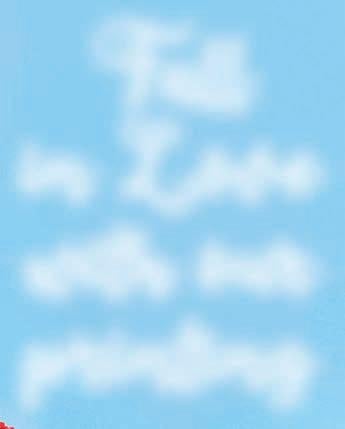
4 minute read
Beyond the Margin
from Mankato Magazine
By Joe Spear
Powwow circle is unbroken
Advertisement
While history’s most significant role may be to warn us about repeating past mistakes, it can also inspire with retelling of stories about great barriers overcome in the human experience.
The upcoming 50th anniversary of the Mahkato Wacipi or powwow is one such inspirational story. And it’s worth retelling.
The U.S.-Dakota War that culminated in the hanging of 38 Dakota in Mankato on Dec. 26, 1862, stands as Mankato’s most significant historical event. It is the largest mass execution in U.S. history.
And the reconciliation effort that started nearly a hundred years later in the 1970s with longtime Mankato businessman Bud Lawrence, community leader Jim Buckley Sr. and tribal leader Amos Owen is remarkable if not legendary.
That the events of 1862 could somehow bring healing between two peoples and be an example for the rest of the world seems like improbable ideas in today’s divided environment. But it has spiritual undertones, which should interest everyone.
History serves us best when it is applied to the present.
Bud Lawrence, who died in 2017, and Jim Buckley, who died in 2020, were community leaders without the status of fame or even great wealth. Amos Owen, Wiyohpeyata Hoksina, who died in 1990, was a Dakota spiritual leader, advocate of Dakota culture and tribal chairman of the Prairie Island Indian Community.
He and Lawrence met on a fishing trip in 1958 near Owen’s home in Red Wing by Prairie Island. They became “fishers of men” and you could say their feat was like walking on water.
They eventually fostered a friendship and the idea of holding the first powwow in 1972 took hold as a kind of cultural event but also a fundraiser for the local YMCA, where Buckley was director.
Owen and others took great interest in the event, but the Dakota people were hesitant at first.
“They weren’t so sure because they wondered what the motive was,” Lawrence told The Free Press in a 2012 article about the 150th anniversary of the hangings.
“The last group meeting here wasn’t very good 110 years before,” Lawrence said.
There was a stigma attached to Mankato, Lawrence said. “They’d come back, but they’d come through at night mostly.”
Owen and wife Ione, Wallace and Gertrude Wells, and Ernest and Vernell Wabasha made great efforts in planning the first powwow and getting the word out to Dakota people.
Dakota from across the Midwest, from California and Arizona attended the first Mahkato Wacipi (which means “dance” or powwow).
“They really appreciated the reconciliation activity that seemed to be taking place here,” Lawrence told The Free Press in 2012. “They thought the Mankato people were really inviting and friendly to them and that really surprised them because of the oral history that has been passed down.”
The first powwow was at Key City Park, later renamed Franklin Rogers Park. The city of Mankato eventually provided more space at a park named by the Dakota people Land of Memories Park or Dakota Wokiksuye Makoce Park.
Today, the event is considered the biggest off-reservation powwow in the country, drawing thousands from various states.
Dave Brave Heart, of Mankato, has kept the tradition strong in the last decade. Always an advocate of reconciliation, his role has been key to keeping the 50-year tradition alive.
There were bumps in the relations along the way.
A stone marker that lauded the hanging site as a monument to justice in 1912 was quietly removed in the decades after and sat in a Mankato warehouse until former Mayor Stan Christ removed it and took it to a place he said he will never reveal.
The Dakota War had its own history.
And even today, people can discuss the implications. Couchoccupying historians have raised arguments and issues from time to time on who suffered the most through loss of life and the severity of suffering.
Hundreds of white settlers died, those historians argue, comparing it to “only” 38 Dakota. But 1,200 Dakota elders, women and children were marched to an internment camp at Fort Snelling in the winter of 1862-63. Many
Bud Lawrence (left), Amos Owen (center) and Jim Buckley organized the first Mahkato Wacipi in 1972. Photo courtesy of “The Mankato Reconciliation Powwow,” by Loren Dean Boutin

Samantha Cobenais, 11, spins as she dances during Education Day at the Mankato Powwow or Mahkato Wacipi in 2021.
died along the way in horrific conditions.
And there’s not a good way to estimate Native American deaths in the battlefield as the tradition was to immediately remove bodies killed in battle.
The answer to these arguments are engraved in the stone bench at the Dakota memorial on Main Street and Riverfront Drive that says: “Forgive everyone everything.”
The powwow has evolved to be a cultural tradition for Native Americans but also an educational event for non-Indian people. The event’s education day was begun in 1987 where Mankato elementary age children attend for a day of learning the Dakota culture and traditions.
Fifty years is a long time for reconciliation to evolve. And there’s still more to do. But this coming together tradition leaves us with good history. Joe Spear is editor of
Mankato Magazine. Contact him at jspear@mankatofreepress.com or 344-6382. Follow on Twitter @jfspear.
Old Main Village
Senior Living with Historic Charm
WE’D LOVE TO SHOW YOU OUR COMMUNITY!
• Serving a range of lifestyle preferences and continuing care needs • Casual living with activities and services available as needed • Award-winning dining venue
• Great value for Mankato and surrounding areas • Walking distance to downtown Mankato • On-site pool and hot tub • 24-hour on-site sta ng Please call 507-388-4200 to schedule a personalized tour!
INDEPENDENT LIVING | ASSISTED LIVING | RESPITE CARE
301 South 5th Street, Mankato, MN 56001 | oldmainvillage.com








